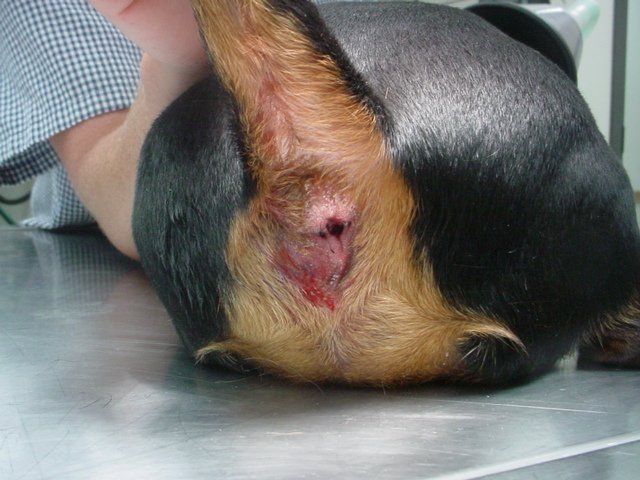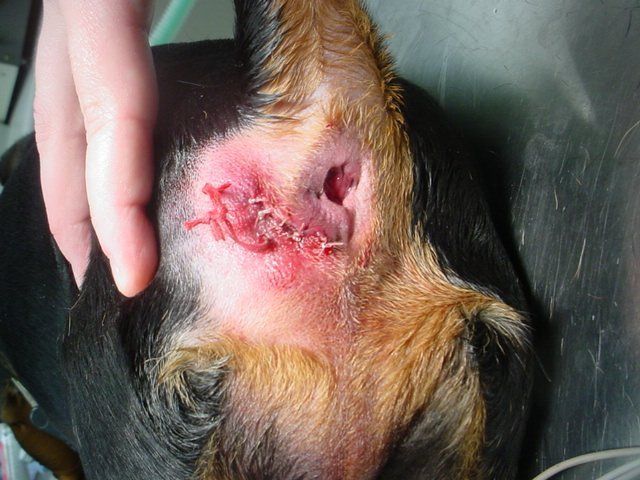Anal Gland Abscess
Dogs can cats have two small glands located on each side of their rectum. These glands are called anal glands. In many cases, pet owners do not even know these glands exist and they do not cause any problems. However, in some dogs and cats, anal glands can cause any problems. This picture shows a ruptured anal gland before any treatment.
Animals with anal gland abscesses may have a fever, lethargy, depression, and loss of appetite. In addition, they may lick the area excessively or scoot. If the anal gland ruptures, there will often be bloody discharge and/or pus pasted on the hair around the rectum. This is a picture of a ruptured anal gland abscess after the hair and debris have been removed.
Treatment of anal gland abscesses involves emptying the anal gland, draining the abscess, removing any dead/necrotic tissue, flushing and cleaning the area, suturing the area closed, and placing a drain. Animals with anal gland abscesses are often placed on antibiotics and pain medications.
An e-collar will help keep the pet from chewing the stitches and drains out. Many dogs that have anal gland abscesses are prone to repeat infections, thus, surgical removal after the site is healed is often recommended. This is a picture of the anal gland abscess after surgical treatment.





Share On: